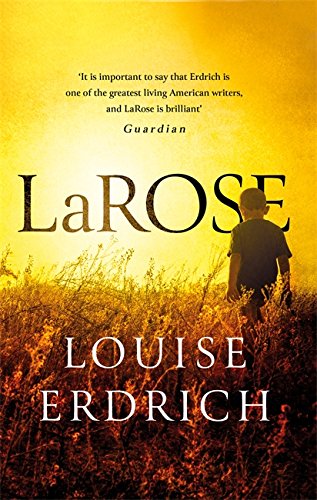When Landreaux Iron accidentally shoots his best friend Peter’s son during the hunting season, the lives of the two families become irreversibly changed. Landreaux would give anything to undo his deadly mistake, and his wife Emmaline cannot imagine how either of the families—already intricately bound by blood and now all the more so by the tragic event—are going to go on living.
And yet it is exactly this living on in the midst of deep suffering that author Louise Erdrich explores throughout the rest of her novel. Writing about a people that are close to her heart, Erdrich offers the reader an in-depth look at the vulnerability of her characters as they attempt to deal with everyday life in the aftermath of tragedy. For as Landreaux tells his clientele when he returns to work after a leave of absence, “Life stops for nothing, even what I done […].” (Erdrich 2016, 32)
And life at the border of this North Dakota reservation does indeed continue, often painstakingly so. We witness Dusty’s grieving mother, Nola, take out her anger on her older daughter Maggie in the harshest and most demeaning ways. Peter fumbles along trying to maintain some sense of peace and order in the house, while simultaneously harboring urges to kill his (former) best friend. As for Landreaux, he is tempted to give up years of sobriety and hit the bottle in order to find release.

In a magnificent scene, Landreaux and Emmaline surrender to the wisdom of their Ojwibe ancestors for answers. Amid a traditional sweat lodge that is abound with steam, medicines and incantations, they receive a vision that is the catalyst for the rest of the story:
“Their son had come out of the clouds asking why he had to wear another boy’s clothing. They had seen LaRose floating above the earth. He had put his hand upon their hearts and whispered, You will live.” (Erdrich 2016, 13)
Following an ancient means of retribution, the couple offer their youngest son, LaRose, to the grieving family. While the boy cannot replace the dead child—Nola notes that “his presence was both comforting and unnerving. He was Dusty and the opposite of Dusty”— his inherent goodness quickly wins them over. (Erdrich 2016, 20) Tensions continue to rise between the two families, but they are bound by what they have in common: they all love LaRose.
While initially unsettling, the families’ agreement to share LaRose offers insight into what can happen when we embrace the principles of non-attachment and impermanence. In her wisdom, Erdrich shows us that the ever-changing parameters of life, however devastating, can lead to formidable surprises.
Reference
Erdrich, Louise, 2016. LaRose. Great Britain: Corsair.

